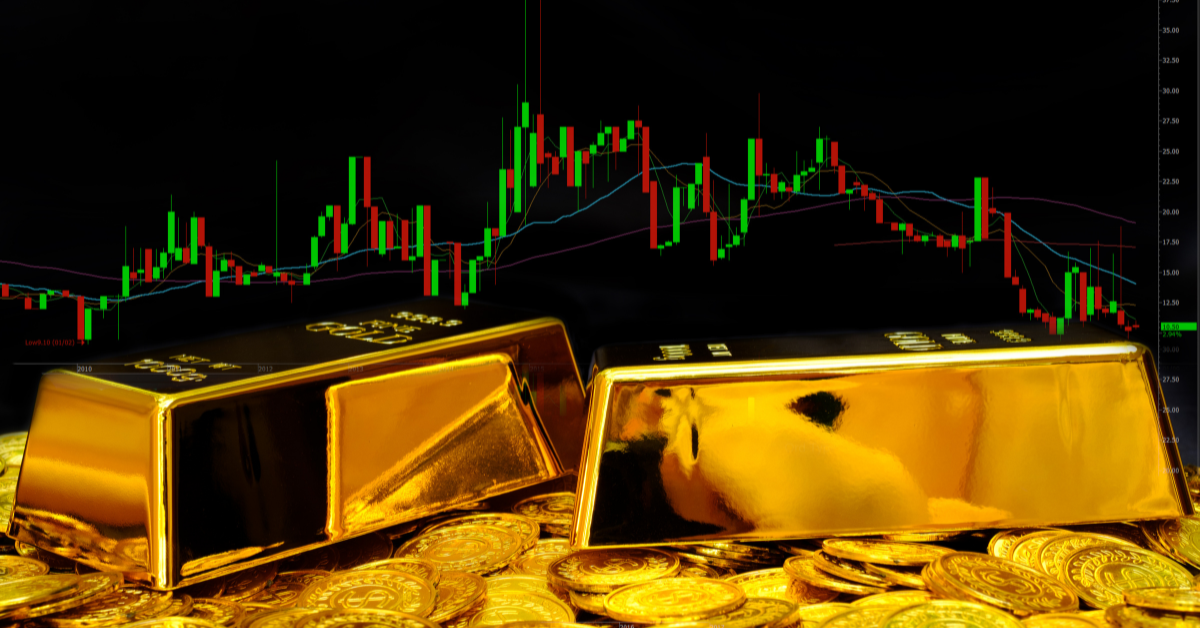Gold prices edged lower on July 27, 2025, as optimism grew around a potential U.S.-EU trade deal, according to a WSJ Markets report. The precious metal, often seen as a safe haven, dipped by 0.5% to $3,335 per ounce, reflecting a shift in investor sentiment. At NQTV365, we’ve dug into this market movement to provide a fresh, human take on why gold is sliding, how the trade talks are influencing it, and what it means for your investments. This isn’t just about shiny bars it’s a window into global economic trends shaping your financial world.
The drop comes as markets react to news of a possible agreement between the U.S. and European Union, with talks intensifying ahead of an August 1 tariff deadline. Traders are scaling back on gold, betting that a deal could stabilize economic uncertainty. This shift has caught the eye of analysts, who see it as a sign of confidence returning to riskier assets like stocks, pulling focus from traditional safe havens.
The U.S.-EU Trade Deal Driving the Shift
The catalyst behind this gold price dip is the progress in U.S.-EU trade negotiations. European Commission President Ursula von der Leyen is set to meet U.S. President Donald Trump in Scotland on Sunday, with sources hinting at a framework deal by the weekend. The proposed deal includes a 15% tariff on most EU goods, a significant reduction from the threatened 30%, alongside a 50% levy on steel and aluminum. This follows a recent U.S.-Japan trade pact that cut auto tariffs, fueling hopes for a similar outcome with Europe.
The U.S. has been pushing for Europe to buy more American goods energy, farm products, and tech while easing digital taxes on U.S. firms. The EU, with its $236 billion trade surplus, is countering with offers to import more U.S. industrial products, though it’s firm on maintaining its tech regulations. If sealed, this deal could avert a trade war that threatened to disrupt $1.2 trillion in annual transatlantic trade, boosting market confidence and reducing the appeal of gold as a hedge.
Why Investors Are Rethinking Gold
Gold’s decline reflects a classic market dynamic: when risk appetite rises, safe-haven demand falls. The prospect of a U.S.-EU deal has investors shifting toward equities and other growth assets. Wall Street saw a modest uptick, with the S&P 500 gaining 0.8% on Friday, as traders bet on smoother trade flows. Gold, which hit $3,360 earlier this week, lost ground as the dollar strengthened slightly, making the metal less attractive for foreign buyers.
Analysts note that gold’s role as an inflation hedge is waning with trade tensions easing. Central banks, which bought 1,000 tons of gold last year, might slow purchases if global stability improves. Individual investors, too, are pulling back retail gold futures dropped 2% in the past week, signaling a shift. This move isn’t panic-driven; it’s a calculated pivot based on the trade talks’ momentum, though some caution that a deal collapse could reverse the trend fast.
Broader Market and Global Implications
The gold price dip signals broader market shifts with global stakes. A successful U.S.-EU deal could lift European stock indices like the DAX by 1-2%, while U.S. markets might see sustained gains. However, it could pressure commodity markets, with silver and palladium also softening as safe-haven demand wanes. Oil prices, tied to trade route stability, might dip slightly if tensions ease, affecting energy stocks.
For consumers, this could mean lower import costs if tariffs are curbed think cheaper European cars or wine. But if the deal falters, gold could rebound sharply, pushing up inflation fears and interest rates. Globally, this move strengthens the dollar, which might weaken emerging market currencies, impacting trade balances in Asia and Latin America. Investors in gold ETFs, holding 100 million ounces, are watching closely, with some reallocating to tech stocks betting on trade-driven growth.
The geopolitical angle is key. A deal could ease U.S.-EU tensions, encouraging cooperation on issues like China’s tech expansion. However, failure might deepen divisions, prompting Europe to pivot toward Asia-Pacific trade blocs, reshaping global alliances. This gold dip is a barometer of these larger forces at play.
What’s Next for Gold and Trade Dynamics
Looking ahead, the Sunday meeting is pivotal. A deal framework could push gold below $3,300, with analysts eyeing $3,280 as a support level. If talks collapse, expect a quick recovery past $3,400 as uncertainty spikes. The August 1 deadline looms large, and any extension talks will keep markets on edge. Goldman Sachs predicts a 60% chance of a deal, but volatility will persist until it’s signed.
For Tesla and Samsung, who rely on stable trade for their $16.5 billion chip deal, a positive outcome could boost their supply chain confidence. Conversely, a trade war might delay such projects, hitting tech stocks. Investors should monitor U.S.-EU statements and gold futures closely daily updates could swing prices 1-2%.
For you, keep an eye on gold prices and trade news, as they’ll hint at economic shifts. Engage with financial forums or contact representatives to push for transparent trade policies. This gold dip is more than a market blip it’s a reflection of a world betting on cooperation over conflict.
Author
-

Marcus Hale is a finance professional turned content creator who specializes in personal finance, stock market analysis, crypto trends, and smart investing strategies. Known for simplifying complex financial concepts, Marcus helps readers make confident money decisions. Whether you’re budgeting, investing, or tracking global markets, Marcus delivers timely advice with clarity and authority.







